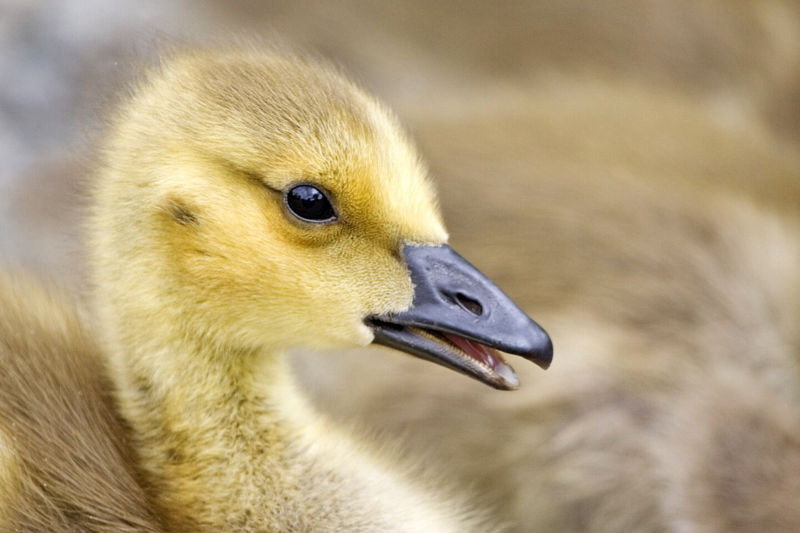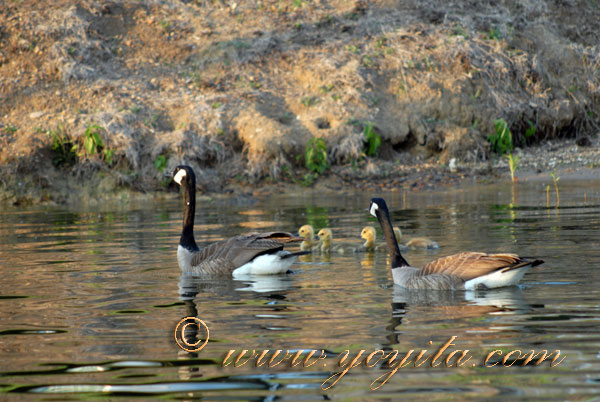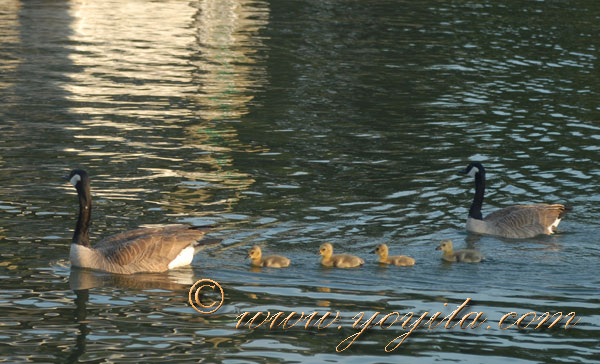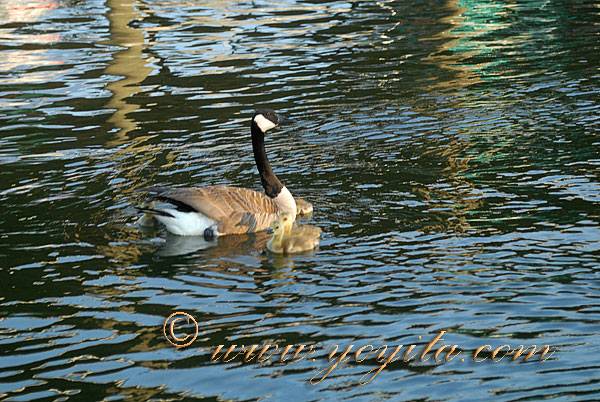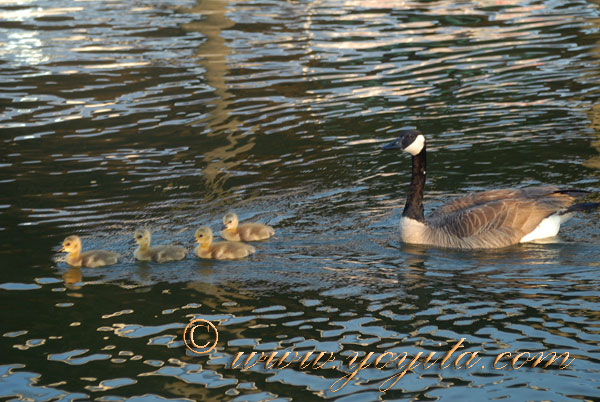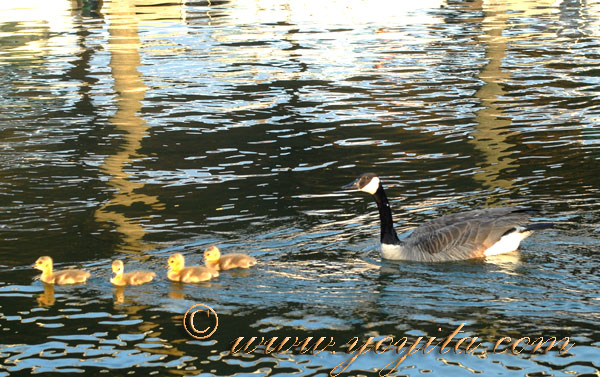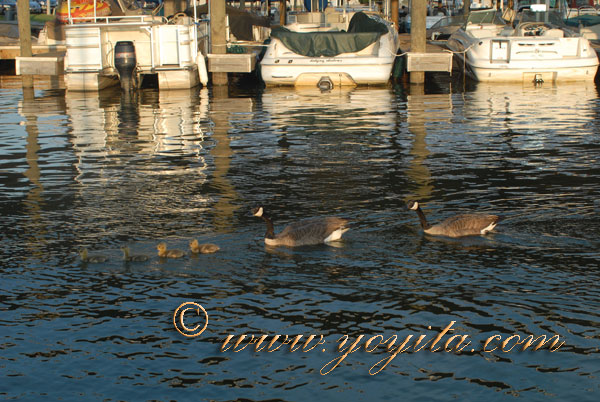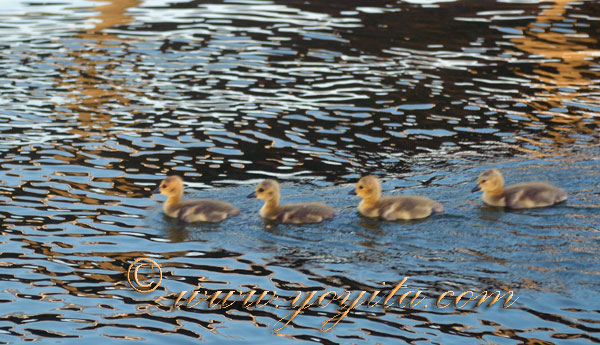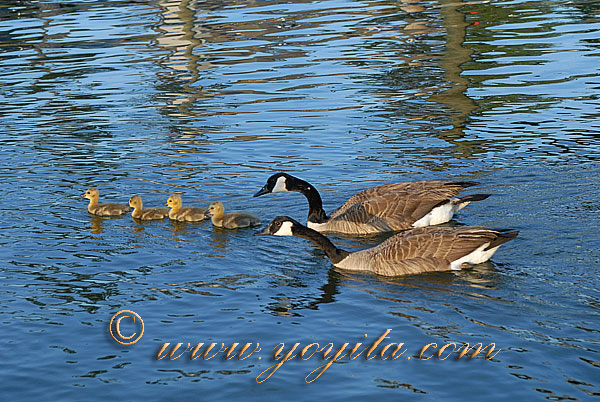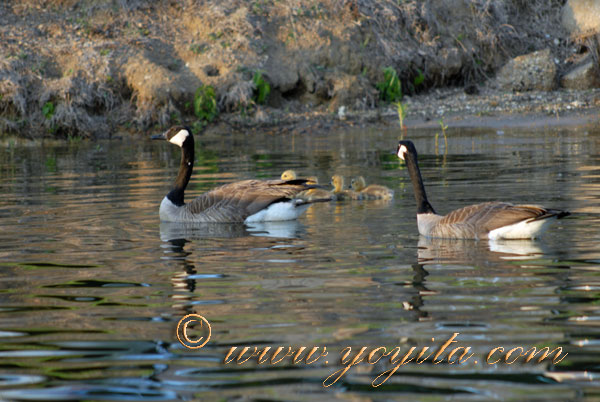Goose geese
Kingdom: Animalia
Phylum: Chordata
Class: Aves
Order: Anseriformes
Family: Anatidae
Subfamily: Anserinae
True geese are medium to large birds, always (with the exception of the Nene) associated to a greater or lesser extent with water. Most species in Europe, Asia and North America are strongly migratory as wild birds, breeding in the far north and wintering much further south. However, escapes and introductions have led to resident feral populations of several species.
Geese have been domesticated for centuries. In the West, farmyard geese are descended from the Greylag, but in Asia the Swan Goose has been farmed for at least as long.
All geese eat a largely vegetarian diet, and can become pests when flocks feed on arable crops or inhabit ponds or grassy areas in urban environments. They also take invertebrates if the opportunity presents itself; domestic geese will try out most novel food items for edibility.
Geese usually mate for life, though a small number will "divorce" and remate. They tend to lay a smaller number of eggs than ducks, however, both parents protect the nest and young, which usually results in a higher survival rate for the young geese.
Not all couples are heterosexual, as both females and males will form long-term same-sex couples with greater or lesser frequency depending on species (Bagemihl, 1999). Of the heterosexual couples, a significant proportion are non-breeding despite having an active sexual life. See Greylag Goose, Canada Goose, and Snow Goose
The following are the living genera of true geese:
Anser - Grey Geese, including the domesticated goose and the Swan Goose
Chen - White Geese (often included in Anser)
Branta - Black Geese
The following two genera are only tentatively placed in the Anserinae; they may belong to the shelducks or form a subfamily on their own:
Cereopsis - Cape Barren Goose
Cnemiornis - New Zealand Geese (prehistoric)
In addition, there are some goose-like birds known from subfossil remains found on the Hawaiian Islands. See Anserinae for more.
Goose in its origins is one of the oldest words of the Indo-European languages (Crystal), the modern names deriving from the proto-Indo-European root, ghans, hence Sanskrit hamsa (feminine hamsii), Latin anser, Greek kh�n etc.
In the Germanic languages, the root word led to Old English gos with the plural g�s, German Gans and Old Norse gas. Other modern derivatives are Russian gus and Old Irish g�iss; the family name of the cleric Jan Hus is derived from the Czech derivative husa.
In non-technical use, the male goose is called a "gander" (Anglo-Saxon gandra) and the female is the "goose" (Webster's Revised Unabridged Dictionary (1913)); young birds before fledging are known as "goslings". A group of geese on the ground is called a gaggle; when flying in formation, it is called a wedge or a skein. See also List of collective nouns for birds.
Diseases:
Angel Wing or Slipped Wing is a disease that affects waterfowl, primarily geese and ducks. There are two basic theories concerning the cause of angel wing, both of which may be correct and both suppose the root cause to be overfeeding waterfowl. The first involves too much protein and the second involves too many sugars. Angel wing is not generally observed in waterfowl not residing near humans, and the disease can often be observed in areas where geese or ducks are excessively fed bread. To prevent angel wing, waterfowl should not be fed bread, popcorn or other human foodstuffs.
The disease manifests as an incurable anatomical condition which is acquired in young birds. Due to a high-calorie diet, especially one high in proteins and/or low in vitamin D, vitamin E and manganese, one or both carpus (wrist) joints are retarded in their development relative to the rest of the wing; for reasons unknown, if only one wing is affected it is usually the left one. The result is a wrist which is twisted outwards and unable to perform its usual function.
Angel wing symptoms include stripped remiges (flight feathers) in the wrist area, or remiges protruding from wings at odd angles. In extreme cases, the stripped feathers may resemble sickly blue straw protruding from wings. In adult birds the disease is incurable and usually leads to an early death as affected birds are rendered effectively or totally flightless. In young birds wrapping the wing and binding it against the bird's flank, together with feeding the bird a more natural diet, can reverse the damage. |


